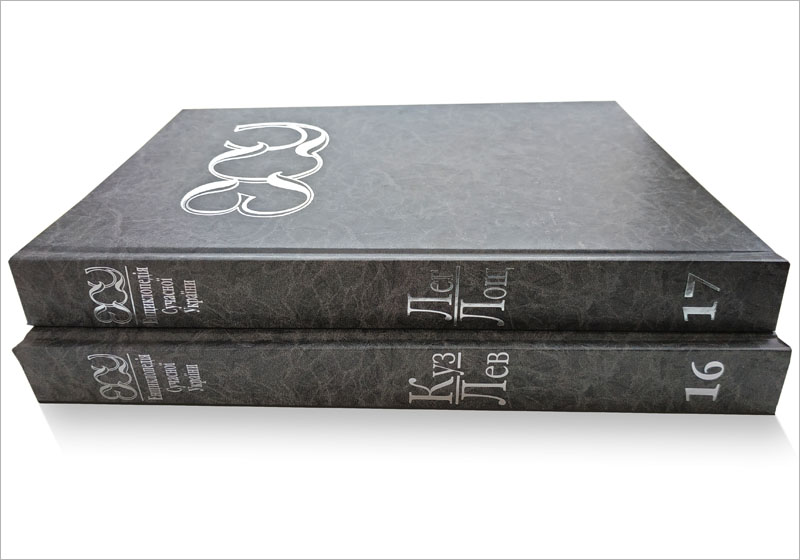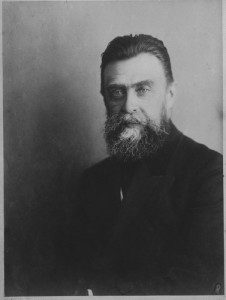|
Kievan Past
''Kievskaia starina'' (russian: Киевская старина, literally "Kievan antiquity") was a monthly historically ethographic and literary chronicle. It was published in Kyiv during 1882–1907 in Russian, and then in Ukrainian in 1906. In this magazine in 1884 was published the first prose work of Taras Shevchenko, published in Russian language, "Kniahynia" ("The Princess"). In the last year of its existence (1906) when censorship on Ukrainian language was dropped, the periodical was renamed ''Ukraina'' ("Ukraine") and was published in Ukrainian. The monthly chronicle played a major role in development of Ukrainian culture under the conditions of the Russian Empire. Together with the periodical worked such people as Volodymyr Antonovych, Dmytro Bahaliy, Mykola Kostomarov, Pavlo Zhytetsky, Orest Levytsky, Oleksandr Yefymenko, Oleksandr Lazarevsky, and others. Main sponsor of the magazine was Hryhorii Galagan. Along with the magazine, in 1899 Mykola Biliashivskyi st ... [...More Info...] [...Related Items...] OR: [Wikipedia] [Google] [Baidu] |
Broadsheet
A broadsheet is the largest newspaper format and is characterized by long Vertical and horizontal, vertical pages, typically of . Other common newspaper formats include the smaller Berliner (format), Berliner and Tabloid (newspaper format), tabloid–Compact (newspaper), compact formats. Description Many broadsheets measure roughly per full broadsheet spread, twice the size of a standard tabloid. Australians, Australian and New Zealand broadsheets always have a paper size of ISO 216, A1 per spread (). South Africa, South African broadsheet newspapers have a double-page spread sheet size of (single-page live print area of 380 x 545 mm). Others measure 22 in (560 mm) vertically. In the United States, the traditional dimensions for the front page half of a broadsheet are wide by long. However, in efforts to save newsprint costs, many U.S. newspapers have downsized to wide by long for a folded page. Many rate cards and specification cards refer to the "broadsheet size ... [...More Info...] [...Related Items...] OR: [Wikipedia] [Google] [Baidu] |
Mykola Biliashivskyi
Mykola Fedotovych Biliashivskyi, sometimes ''Biliashivsky'' (; 24 October 1867, Uman – 21 April 1926, Kiev) was a Ukrainian archaeologist, ethnographer, and art historian Art history is the study of aesthetic objects and visual expression in historical and stylistic context. Traditionally, the discipline of art history emphasized painting, drawing, sculpture, architecture, ceramics and decorative arts; yet today .... References {{DEFAULTSORT:Biliashivskyi, Mykola 1867 births 1926 deaths People from Uman People from Umansky Uyezd Members of the 1st State Duma of the Russian Empire Members of the Central Council of Ukraine Ukrainian archaeologists Ukrainian art historians Taras Shevchenko National University of Kyiv alumni Members of the National Academy of Sciences of Ukraine ... [...More Info...] [...Related Items...] OR: [Wikipedia] [Google] [Baidu] |
Russian-language Magazines
Russian (russian: русский язык, russkij jazyk, link=no, ) is an East Slavic language mainly spoken in Russia. It is the native language of the Russians, and belongs to the Indo-European language family. It is one of four living East Slavic languages, and is also a part of the larger Balto-Slavic languages. Besides Russia itself, Russian is an official language in Belarus, Kazakhstan, and Kyrgyzstan, and is used widely as a lingua franca throughout Ukraine, the Caucasus, Central Asia, and to some extent in the Baltic states. It was the ''de facto'' language of the former Soviet Union, Constitution and Fundamental Law of the Union of Soviet Socialist Republics, 1977: Section II, Chapter 6, Article 36 and continues to be used in public life with varying proficiency in all of the post-Soviet states. Russian has over 258 million total speakers worldwide. It is the most spoken Slavic language, and the most spoken native language in Europe, as well as the most geographica ... [...More Info...] [...Related Items...] OR: [Wikipedia] [Google] [Baidu] |
Magazines Published In The Russian Empire
A magazine is a periodical publication, generally published on a regular schedule (often weekly or monthly), containing a variety of content. They are generally financed by advertising, purchase price, prepaid subscriptions, or by a combination of the three. Definition In the technical sense a ''journal'' has continuous pagination throughout a volume. Thus ''Business Week ''Bloomberg Businessweek'', previously known as ''BusinessWeek'', is an American weekly business magazine published fifty times a year. Since 2009, the magazine is owned by New York City-based Bloomberg L.P. The magazine debuted in New York City ...'', which starts each issue anew with page one, is a magazine, but the '' Journal of Business Communication'', which continues the same sequence of pagination throughout the coterminous year, is a journal. Some professional or Trade magazine, trade publications are also Peer review, peer-reviewed, for example the ''American Institute of Certified Public Accountan ... [...More Info...] [...Related Items...] OR: [Wikipedia] [Google] [Baidu] |
Kiev University
Kyiv University or Shevchenko University or officially the Taras Shevchenko National University of Kyiv ( uk, Київський національний університет імені Тараса Шевченка), colloquially known as KNU, is located in Kyiv, the capital of Ukraine. The university is universally recognized as the most prestigious university of Ukraine, being the largest national higher education institution. KNU is ranked within top 650 universities in the world. It is the third oldest university in Ukraine after the University of Lviv and University of Kharkiv. Currently, its structure consists of fifteen faculties (academic departments) and five institutes. It was founded in 1834 by the Russian Tsar Nikolai I as the Saint Vladimir Imperial University of Kiev, and since then it has changed its name several times. During the Soviet Union era, Kiev State University was one of the top-three universities in the USSR, along with Moscow State University and Le ... [...More Info...] [...Related Items...] OR: [Wikipedia] [Google] [Baidu] |
Maryna Paliienko
Maryna Hennadiivna Paliienko ( uk, Марина Геннадіївна Палієнко; born 27 January 1968 in Kyiv) is a contemporary Ukrainian historian in the field of archival studies. Since 2017, she is the chair of the Department of Archival Studies and Special Fields of Historical Science at the Historical Faculty of the Kyiv University. Since 2020, she is the chief editor of „Ukrainian Archives“, a leading Ukrainian journal on archival studies. Biography Maryna Paliienko was born in Kyiv in 1968. She studied at the Historical Faculty of the Kyiv University (1985-1990). In the early 1990s, she briefly worked at the Central State Archives of Supreme Bodies of Power and Government of Ukraine, before proceeding with graduate studies. She obtained a PhD (Candidate of Sciences) degree in history in 1994, with the doctoral thesis focused on the role of ''Kievskaya starina'' сhronicle in the scientific and civic life of the Ukrainian society. In 2009, she obtained a D ... [...More Info...] [...Related Items...] OR: [Wikipedia] [Google] [Baidu] |
Encyclopedia Of Modern Ukraine
Encyclopedia of Modern Ukraine ( uk, Енциклопедія Сучасної України (ЕСУ), translit=Entsyklopediia Suchasnoi Ukrainy (ESU)), abbreviated EMU, is a multi-Volume (bibliography), volume national encyclopedia of Ukraine. It is an academic project of the Institute of Encyclopaedic Research of the National Academy of Sciences of Ukraine. Today, the reference work is available in a print edition and online. The ''EMU'' provides an integral image of modern Ukraine describing events, institutions, organizations, activities, notions and people from the early 20th century to the present. It embraces all spheres of life in Ukraine, and reflects current views on historical events and personalities. Paper edition A first edition has been in progress. 30 volumes are planned — by 2022 24 volumes had been published and it has already become the most comprehensive paper encyclopedia on Ukraine to date. Published volumes are co-edited by Ivan Dziuba, Arkadii Zhukov ... [...More Info...] [...Related Items...] OR: [Wikipedia] [Google] [Baidu] |
Osnova
The Ukrainian journal ''Osnova'' (meaning ''Basis'' in English) was published between 1861 and 1862 in Saint Petersburg. It contained articles devoted to life and customs of the Ukrainian people, including regular features about their wedding customs and traditions. Prominent figures were associated with the journal ''Osnova'' included Ukrainian intellectuals such as Volodymyr Antonovych and Tadei Rylsky (father of Maksym Rylsky), as well as poet Pavlo Chubynsky.Aleksei I. Miller, The Ukrainian Question: The Russian Empire and Nationalism in the Nineteenth Century' («Украинский вопрос» в политике властей и русском общественном мнении. вторая половина XIX в.), Central European University Press, Budapest, 2003, pp. 76-77. Overview In the Russian Empire expressions of Ukrainian culture and especially language were repeatedly persecuted, for fear that a self-aware Ukrainian nation would threaten the unit ... [...More Info...] [...Related Items...] OR: [Wikipedia] [Google] [Baidu] |
Volodymyr Pavlovych Naumenko
Volodymyr Naumenko ( uk, Володимир Павлович Науменко; 19 July 1852 – 8 July 1919) was a well known pedagogue and public figure in the city of Kiev as well as a good publicist. Upon the establishment of the Central Council of Ukraine for couple of weeks he served as its chairman until Mykhailo Hrushevsky returned from his exile. Later Naumenko also was appointed as a minister of education. He was executed by the Cheka for "counter-revolutionary activity". In 1893-1906 Naumenko was a chief editor of the monthly historical magazine '' Kievskaya starina'' (Kievan Past). Biography Origin and family Naumenko was born on July 19, 1852 in Novhorod-Siversky. His father Pavlo Osypovych Naumenko was a director of gymnasium (school). About his family tree Naumenko wrote the following:Quote aftePaikova, Е. V. ''Volodymyr Naumenko (1852-1919)''. Ukrainian historical magazine N6, 1998/ref> Childhood Naumentko spent in Novhorod-Siversky and Bila Tserkva. ... [...More Info...] [...Related Items...] OR: [Wikipedia] [Google] [Baidu] |
Yevhen Kivlytskyi
Yevhen ( uk, Євге́н, Jevhén ), also spelled Evhen, is a common Ukrainian given name. Its Old Church Slavonic form ''Евгении'' came from the Greek ''Eugenios'' (masculine form), names derived from the Greek adjective , literally "well-born"."Євген" in Etymolohichnyĭ Slovnyk Ukraïns′koï Movy' (''Etymological Dictionary of the Ukrainian Language''), O.S. Mel′nychuk, 1982–2006. Yevhen is the Ukrainian equivalent of the English given name Eugene. People with the given name include * Yevhen Adamtsevych, blind Ukrainian kobzar-bandurist * Yevhen Apryshko (born 1985), Ukrainian footballer * Yevhen Baryshnikov, a Ukrainian football defensive midfielder who plays for FC Kryvbas Kryvyi Rih * Yevhen Braslavets, Ukrainian sailor and Olympic champion * Yevhen Bredun, Ukrainian football defender who plays for FC Sevastopol * Yevhen Budnik, Ukrainian football midfielder for Metalist Kharkiv * Yevhen Cheberyachko, Ukrainian footballer * Yevhen Chepurnenko, Ukrainia ... [...More Info...] [...Related Items...] OR: [Wikipedia] [Google] [Baidu] |
Oleksandr Lashkevych
Alexander is a male given name. The most prominent bearer of the name is Alexander the Great, the king of the Ancient Greek kingdom of Macedonia who created one of the largest empires in ancient history. Variants listed here are Aleksandar, Aleksander and Aleksandr. Related names and diminutives include Iskandar, Alec, Alek, Alex, Alexandre, Aleks, Aleksa and Sander; feminine forms include Alexandra, Alexandria, and Sasha. Etymology The name ''Alexander'' originates from the (; 'defending men' or 'protector of men'). It is a compound of the verb (; 'to ward off, avert, defend') and the noun (, genitive: , ; meaning 'man'). It is an example of the widespread motif of Greek names expressing "battle-prowess", in this case the ability to withstand or push back an enemy battle line. The earliest attested form of the name, is the Mycenaean Greek feminine anthroponym , , (/Alexandra/), written in the Linear B syllabic script. Alaksandu, alternatively called ''Alakasandu'' or ' ... [...More Info...] [...Related Items...] OR: [Wikipedia] [Google] [Baidu] |




